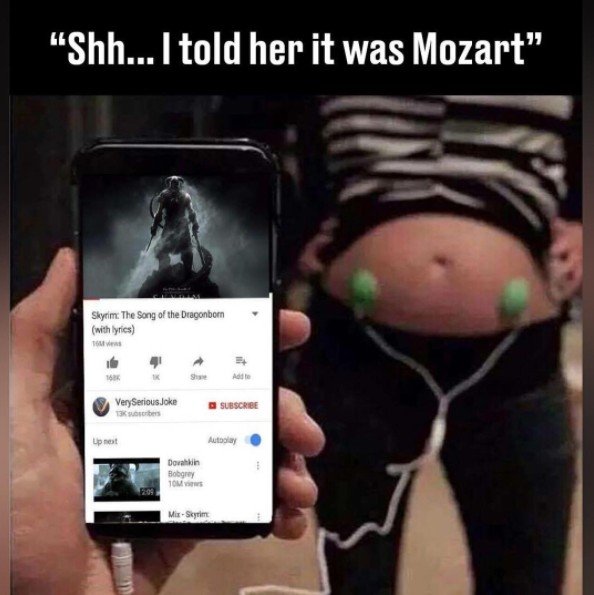Infant Hearing Development: What Can Your Baby Hear?
What can a baby hear? What does infant hearing development look like? What activities can help my baby develop their hearing?
Babies can hear before birth, but their hearing is limited because their inner ear is filled with fluid when they are born. By seven to twelve months, your baby’s hearing is about the same as an adults. During their first year and beyond, your baby’s brain is developing the ability to process sounds and then connect them with people, objects, and ideas.

Some of the links below are affiliate links. This means that, at zero cost to you, I will earn an affiliate commission if you click through the link and finalize a purchase.
When can a baby hear mom in the womb?

Let’s talk about hearing development during pregnancy. First, during week 9, small indentations are forming where your baby’s ears will grow. At week 16, the inner ear is connecting with neurons in the brain that process sound. And the tiny bones of the inner ear have developed enough that it is likely that baby is detecting some limited noises. Your baby’s hearing develops rapidly from that point!
When can a baby hear mom in the womb? By 18 weeks of pregnancy, your baby hears their first sounds. Your baby can hear sounds from the outside world starting around the 23 weeks. At 25 weeks, your baby may respond to noises or voices from within the womb. For example, they may startle in response to a loud noise. At 35 weeks, all the parts of the ear are formed, but your baby’s hearing continues to fine tune after birth. The portions of the brain that respond to sounds and attach meanings are still developing.
The womb is a noisy place and your baby can hear mom’s heartbeat, and the whooshing sounds of breathing and blood moving through her veins. This is why many very young babies enjoy white noise, like vacuum cleaners, dishwashers, fans, and white noise machines.
0-3 Months

While your baby can hear before they are born, an infants hearing development happens quickly as your baby learns to understand what they are hearing in the world around them! At birth, a newborn’s middle ear is full of fluid, which slightly impairs hearing. Your baby will pay attention to loud, high pitched voices and responds to familiar sounds, like you or your partner’s voice. By one month, babies can tell the difference between some sounds, like “pa” and “ba.” Around two to three months, most babies get quiet or smile when they hear familiar voices. They may startle at loud sounds. When feeding, they will begin to start or stop sucking in response to sounds.
Talking and reading to your child even at this young age helps them develop a feel for the cadence of language (related post: The Best Books for Babies Under 6 Months). Simply narrating what you are doing may fascinate your baby at this age. A white noise machine may help your baby calm down as it reminds them of the noises they heard in the womb.
4-6 months
At about four months, your baby will start to look for the source of sounds, and follow sounds with their eyes. For example, if mom is walking and talking, her baby will probably move his head or eyes as she passes by. Between four and six months, your baby will respond to changes in your tone of voice, notice toys that make sounds, and pay attention to music. They will try to imitate sounds around six months and babble in a pattern similar to speech. Around this time, time your baby will begin to recognize and respond to their name. This is also when your baby will begin to look for sources of sounds that aren’t a person, like a dog barking or the dishwasher running.
At this point, your baby can hear a wider range of frequencies and their temporal lobe is also developing. This part of the brain is responsible for understanding sound, language and interpreting other sensory stuff.
Comment on what your baby is hearing to help them understand the world around them. I tell my daughter the most boring stuff, but she finds it fascinating. “Look, now I’m putting the red cup in the sink!” Your baby may focus on your mouth as they begin to babble and make new sounds. Give your baby toys that rattle or make sound.
Related post: the best learning apps for infants, including apps that rattle and make sounds.
My daughter loves this moose toy from Amazon. The rings on the tail rattle if she shakes it, the feet crinkle when she squeezes them, and there’s a squeaker in the body.
7-12 months
Now your baby’s hearing is fully developed and they are learning to associate sounds with words, emotions, and actions. By the time your baby is seven to twelve months old, they will likely enjoy playing singing games like patty cake. They can turn in the direction of sounds and listen when spoken to. They will imitate different sounds and respond to simple requests, like “come here.” Now that their hearing has completely developed they can work even harder on their language skills!
Source: US Department of Health & Services checklist for hearing milestones.
Conclusions
Your infant’s hearing development started before they were even born! As they grow during their first year, your baby will be able to hear all the same sounds and frequencies as an adult. And as their brain matures, your baby will begin connecting things they hear to the world around them!
Related: Read about Infant Visual Development!

